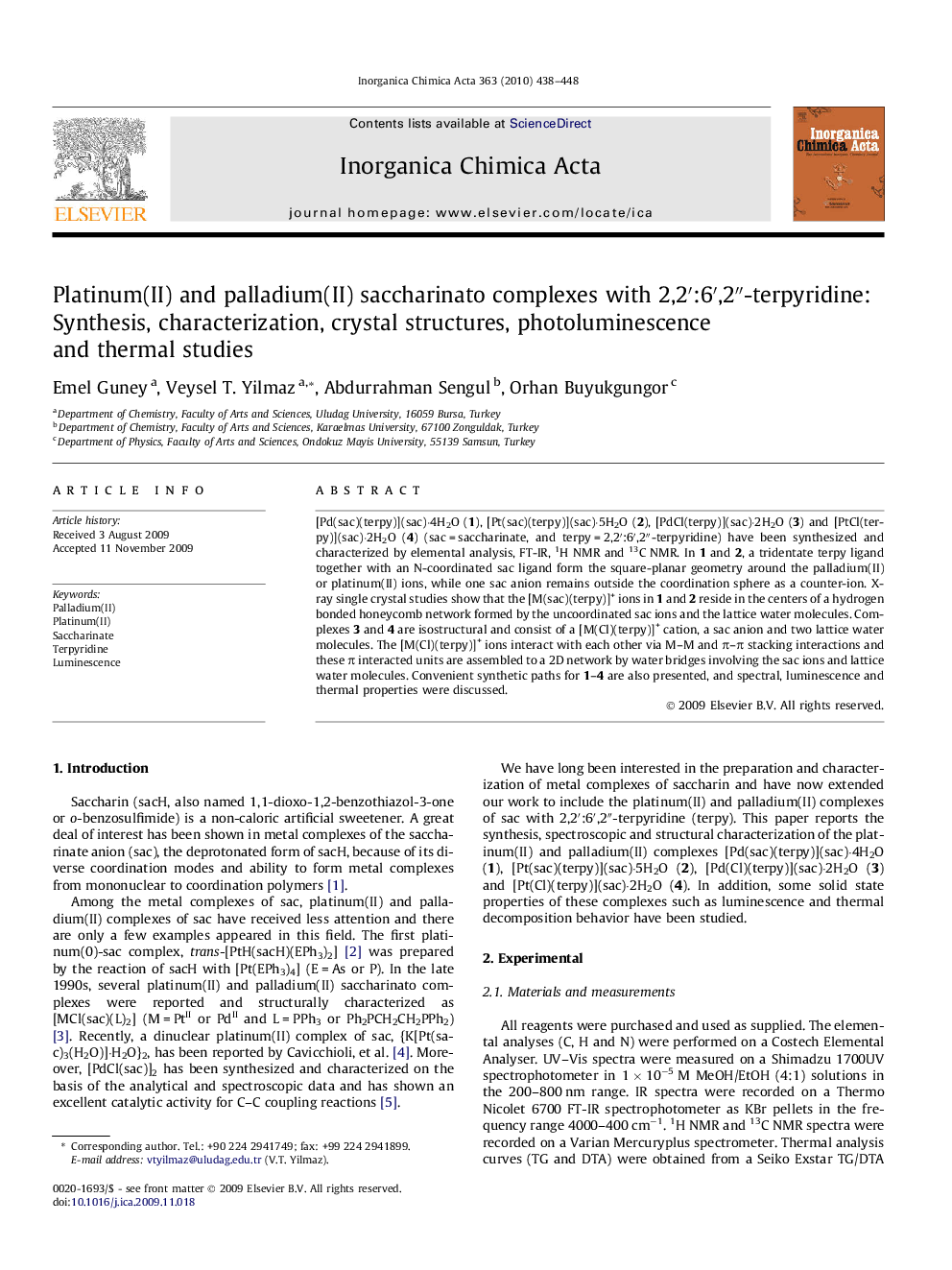| Article ID | Journal | Published Year | Pages | File Type |
|---|---|---|---|---|
| 1311279 | Inorganica Chimica Acta | 2010 | 11 Pages |
[Pd(sac)(terpy)](sac)·4H2O (1), [Pt(sac)(terpy)](sac)·5H2O (2), [PdCl(terpy)](sac)·2H2O (3) and [PtCl(terpy)](sac)·2H2O (4) (sac = saccharinate, and terpy = 2,2′:6′,2″-terpyridine) have been synthesized and characterized by elemental analysis, FT-IR, 1H NMR and 13C NMR. In 1 and 2, a tridentate terpy ligand together with an N-coordinated sac ligand form the square-planar geometry around the palladium(II) or platinum(II) ions, while one sac anion remains outside the coordination sphere as a counter-ion. X-ray single crystal studies show that the [M(sac)(terpy)]+ ions in 1 and 2 reside in the centers of a hydrogen bonded honeycomb network formed by the uncoordinated sac ions and the lattice water molecules. Complexes 3 and 4 are isostructural and consist of a [M(Cl)(terpy)]+ cation, a sac anion and two lattice water molecules. The [M(Cl)(terpy)]+ ions interact with each other via M–M and π–π stacking interactions and these π interacted units are assembled to a 2D network by water bridges involving the sac ions and lattice water molecules. Convenient synthetic paths for 1–4 are also presented, and spectral, luminescence and thermal properties were discussed.
Graphical abstract[Pd(sac)(terpy)](sac)·4H2O (1), [Pt(sac)(terpy)](sac)·5H2O (2), [PdCl(terpy)](sac)·2H2O (3) and [PtCl(terpy)](sac)·2H2O (4) (sac = saccharinate, and terpy = 2,2′:6′,2″-terpyridine) have been synthesized. In 1 and 2, the metals are coordinated by a tridentate terpy ligand and a sac ligand, while one sac anion behaves as a counter-ion. In 3 and 4, sac does not coordinate the metal ions.Figure optionsDownload full-size imageDownload as PowerPoint slide
